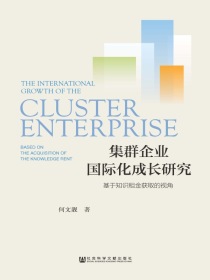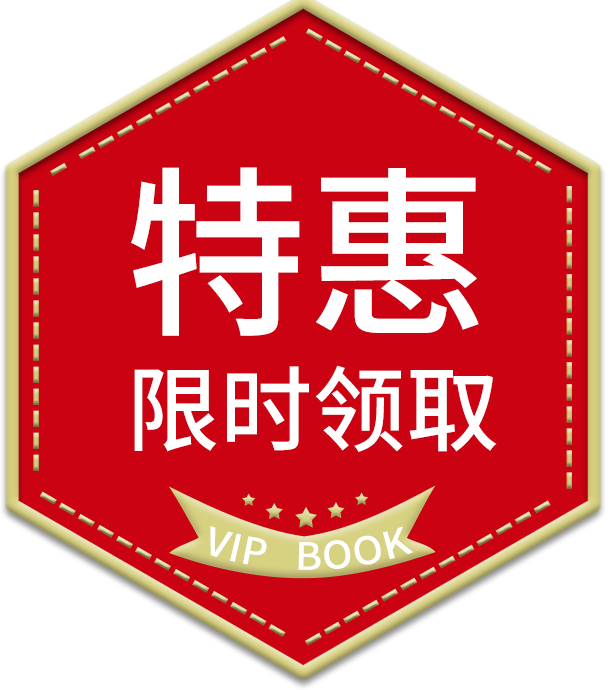类似推荐
编辑推荐
外研社杯”全国大学生英语辩论赛官方指定教材,也可以作为大学辩论课程教材,还可供有较高英文水平且对辩论感兴趣或者有志于加强逻辑思维训练的人士自学。
内容简介
本书是一本介绍辩论的英文教材,作者均为来自中美两国从事辩论研究和教学的大学教师。本书旨在使学生通过学习和训练,增强思辨及表达能力,不仅将学习者塑成本国优秀公民,更成为具有国际视野的全球公民、思辨精英。本教材深入浅出,从各方面全面介绍了辩论,并辅以大量辩论实例支撑理论,生动直观,具有极强的可操作性。本教材是“外研社杯”全国大学生英语辩论赛官方指定教材,也可以作为大学辩论课程教材,还可供有较高英文水平且对辩论感兴趣的人士自学。
作者简介
作者罗伯特·崔普,美国俄勒冈州威拉米特大学修辞学教授、大学辩论会辩论指导。辩论教练生涯长达四十年。
章节目录
版权信息
本书作者简介
Acknowledgments
Preface
Part one Introduction to Educational Debate
Chapter 1 Debate as a Valuable Social Process and a Unique Educational Tool
1.1 Why Study Debate?
1.2 An Historical Look at Argumentation and Debate in China and the United States
1.3 Contemporary Developments in Argumentation, Debate, and Persuasion
1.4 Developments in Educational Debate
1.5 From Educational Debate to Generative Debate
1.6 Summary
1.7 Terms and Concepts from Chapter 1
1.8 Discussion Questions for Chapter 1
Chapter 2 Ethical Considerations in Debate
2.1 The Ethical Debater
2.2 Four Features of Debate
2.3 Some Guidelines for Developing a Code of Ethics in Debate
2.4 Summary
2.5 Terms and Concepts from Chapter 2
2.6 Discussion Questions for Chapter 2
Chapter 3 Concepts Fundamental to Debating
3.1 Two Sets of Related Concepts
3.2 Components of Arguments
3.3 Kinds of Claims
3.4 Claims and Supporting Material
3.5 Principles and Consequences as Means of Evaluation
3.6 Summary
3.7 Terms and Concepts from Chapter 3
3.8 Discussion Questions for Chapter 3
Chapter 4 Analyzing a Debate Topic
4.1 Analyzing Topic Background
4.2 Analyzing Topic Type
4.3 Analyzing the Definition and Interpretation of the Topic
4.4 Analyzing Potential Issues
4.5 Summary
4.6 Terms and Concepts from Chapter 4
4.7 Discussion Questions for Chapter 4
4.8 Exercises for Chapter 4
Part Two Worlds-Style Debate
Chapter 5 Worlds-Style Debate as a Model of Educational Debate
5.1 Parliamentary Systems and Worlds-Style Debate
5.2 Worlds-Style Debate Format
5.3 Responsibilities for Speakers in Worlds-Style Debate
5.4 Summary
5.5 Terms and Concepts from Chapter 5
5.6 Discussion Questions for Chapter 5
5.7 Exercise for Chapter 5
Chapter 6 Arguments by First Government Teams
6.1 Role of the Prime Minister
6.2 Outline of a Prime Minister Speech Supporting a Value Motion
6.3 Outline of a Prime Minister Speech Supporting a Policy Motion
6.4 Role of the Deputy Prime Minister
6.5 Summary
6.6 Terms and Concepts from Chapter 6
6.7 Discussion Questions for Chapter 6
6.8 Exercises for Chapter 6
Chapter 7 Arguments by First Opposition Teams
7.1 Role of Leader of Opposition
7.2 Role of the Deputy Leader of Opposition
7.3 Common Kinds of Opposition Arguments
7.4 Summary
7.5 Terms and Concepts from Chapter 7
7.6 Discussion Questions for Chapter 7
7.7 Exercises for Chapter 7
Chapter 8 Extending the Debate in Member Speeches
8.1 Refuting Arguments in Member Speeches
8.2 Extending Arguments
8.3 Using Preparation Time to Prepare for Member Speeches
8.4 Summary
8.5 Terms and Concepts from Chapter 8
8.6 Discussion Questions for Chapter 8
8.7 Exercises for Chapter 8
Chapter 9 Summarizing the Debate in Whip Speeches
9.1 Overview of Whip Speeches
9.2 Summarizing: What to Discuss
9.3 Summarizing: How to Organize
9.4 The Response Trap
9.5 Summary
9.6 Terms and Concepts from Chapter 9
9.7 Discussion Questions for Chapter 9
9.8 Exercises for Chapter 9
Part Three Debating Skills
Chapter 10 Refuting and Rebuilding Arguments
10.1 Refuting Arguments
10.2 Rebuilding Arguments
10.3 Summary
10.4 Terms and Concepts from Chapter 10
10.5 Discussion Questions for Chapter 10
10.6 Exercises for Chapter 10
Chapter 11 Points of Information
11.1 Offering Points of Information
11.2 Responding to Points of Information
11.3 Summary
11.4 Terms and Concepts from Chapter 11
11.5 Discussion Questions for Chapter 11
11.6 Exercise for Chapter 11
Chapter 12 Research Strategies for Debate
12.1 Developing Good Research Habits
12.2 Selecting Appropriate Resources & Formulating Searches
12.3 Evaluating Websites
12.4 Summary
12.5 Terms and Concepts from Chapter 12
12.6 Discussion Questions for Chapter 12
12.7 Exercise for Chapter 12
Chapter 13 Listening and Taking Notes
13.1 Listening in Debates
13.2 Paraphrasing
13.3 Flowing the Debate
13.4 Summary
13.5 Terms and Concepts from Chapter 13
13.6 Discussion Questions for Chapter 13
13.7 Exercise for Chapter 13
Appendix A—SAMPLE DEBATE FLOW SHEET
Chapter 14 Delivery
14.1 Becoming a Proficient Speaker
14.2 General Features of Effective Delivery in Debate
14.3 Using the Body in Delivery
14.4 Using the Voice in Delivery
14.5 Summary
14.6 Terms and Concepts from Chapter 14
14.7 Discussion Questions for Chapter 14
14.8 Exercises for Chapter 14
Part Four Elements of Argument and Argumentation
Chapter 15 Elements of Argument: Claims and Exceptions
15.1 Claims
15.2 Exceptions
15.3 Summary
15.4 Terms and Concepts from Chapter 15
15.5 Discussion Questions for Chapter 15
15.6 Exercises for Chapter 15
Chapter 16 Elements of Argument: Evidence
16.1 Categories of Evidence
16.2 Citing and Documenting Evidence
16.3 Summary
16.4 Terms and Concepts from Chapter 16
16.5 Discussion Questions for Chapter 16
16.6 Exercise for Chapter 16
Chapter 17 Linking Evidence to Claims
17.1 Argument by Authority
17.2 Argument by Generalization
17.3 Argument by Analogy
17.4 Argument by Causality
17.5 Argument by Principle
17.6 Argument by Incompatibility
17.7 Argument by Dissociation
17.8 Summary
17.9 Terms and Concepts from Chapter 17
17.10 Discussion Questions for Chapter 17
17.11 Exercise for Chapter 17
Chapter 18 The Structure of Arguments
18.1 Simple Arguments
18.2 Combined Arguments
18.3 Independent Arguments
18.4 Summary
18.5 Terms and Concepts from Chapter 18
18.6 Discussion Questions for Chapter 18
18.7 Exercise for Chapter 18
Chapter 19 Argumentation, Consequences, and Principles
19.1 Evaluation Based on Consequences of Action
19.2 Evaluation Based on Principles of Duties and Rights
19.3 Summary
19.4 Terms and Concepts from Chapter 19
19.5 Discussion Questions for Chapter 19
19.6 Exercises for Chapter 19
Chapter 20 Combining Claims Coherently
20.1 Supporting a Main Claim with a Series of Sub-Claims
20.2 A Pattern for Combining Sub-Claims to Support a Primary Claim
20.3 Using the General Pattern to Create Arguments
20.4 Summary
20.5 Terms and Concepts from Chapter 20
20.6 Discussion Questions for Chapter 20
20.7 Exercise for Chapter 20
Chapter 21 The Quality of Arguments: Fallacies in Argumentation
21.1 Criteria for Logical Assessment of Arguments
21.2 Three Basic Fallacies
21.3 Summary
21.4 Terms and Concepts from Chapter 21
21.5 Discussion Questions for Chapter 21
21.6 Exercise for Chapter 21
Part Five Teaching and Coaching Debate
Chapter 22 Judging and Evaluating Debates
22.1 Mechanics of Judging Worlds-Style Debate
22.2 Guidelines for Speaker Points
22.3 Judge as Educator
22.4 Summary
22.5 Terms and Concepts from Chapter 22
22.6 Discussion Questions for Chapter 22
Chapter 23 Administering a Debate Tournament
23.1 Benefits of Hosting a Tournament
23.2 Tournament Logistics
23.3 Personnel and Their Responsibilities
23.4 Tournament Invitation
23.5 Summary
23.6 Terms and Concepts from Chapter 23
23.7 Discussion Questions for Chapter 23
Appendix A CHECK SHEET FOR HOSTING A DEBATE TOURNAMENT
Appendix B TOURNAMENT INVITATION TEMPLATE
Appendix C TABULATION TASKS FOR EACH DEBATE
Appendix D SAMPLE JUDGE HANDOUT
Appendix E SAMPLE TOURNAMENT ENTRY FORM TOURNAMENT ENTRY FORM
Works Cited
思辨精英:英语辩论:构筑全球视角是2016年由外语教学与研究出版社出版,作者[美] 罗伯特·崔普。
得书感谢您对《思辨精英:英语辩论:构筑全球视角》关注和支持,如本书内容有不良信息或侵权等情形的,请联系本网站。

















